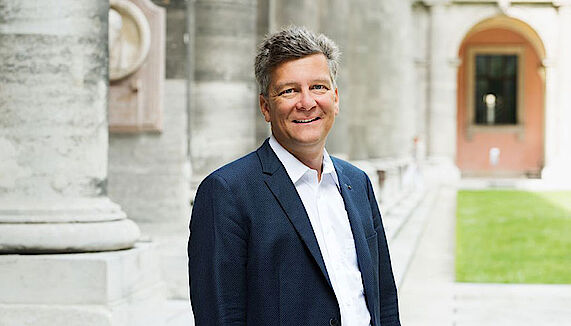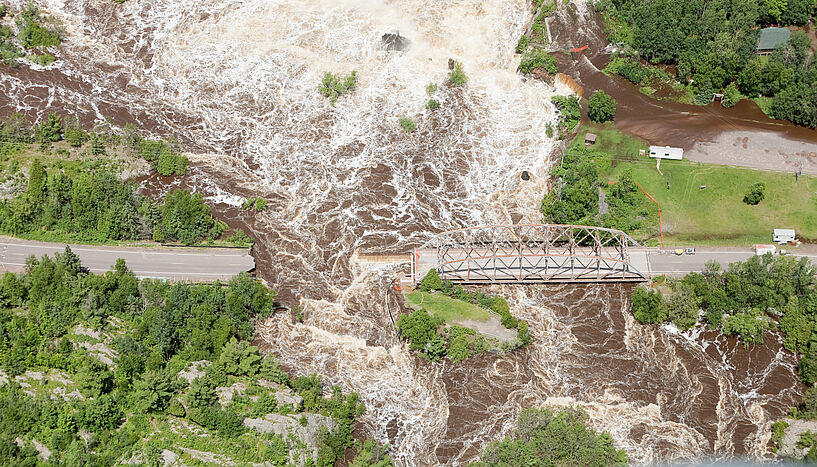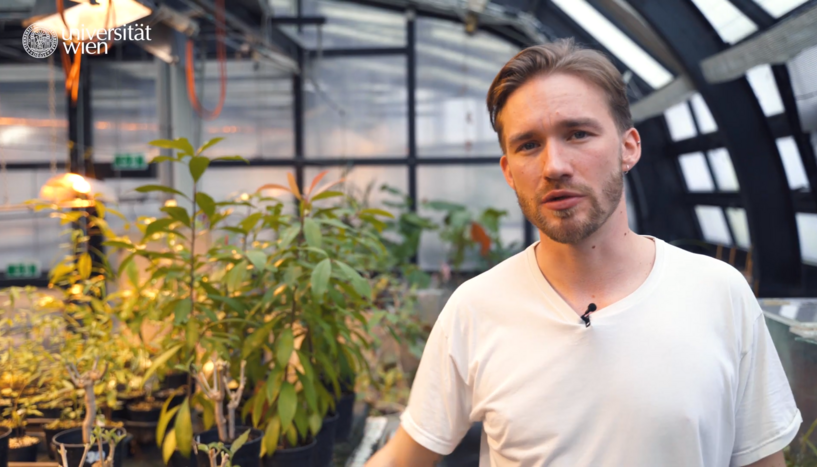How are the atmosphere and environmental pollution intertwined?
| 10. Juni 2021
The import of increasing ozone concentrations from the huge industrialised urban agglomerations in Asia causes serious problems in North America, among others. (© Ralf Vetterle/Pixabay)
Environmental pollution requires us to think globally and focus on more than regional measures alone, explains meteorologist Andreas Stohl. "You, dear reader, might be part of the solution to the problem", he says. If you want to discuss this with him, join the panel discussion on Monday, 14 June, 6:00 p.m.!
While waste disposed of in nature remains at the same place, air pollution does not stop at national borders. The wind can carry exhaust fumes or particles that we humans emit into the atmosphere over very long distances to the most remote areas. This does often not only result in air pollution alone because many pollutants can deposit on the ground or deposit from the atmosphere by rain and thus contaminate the soil, lakes and oceans all over the world.
Already the Romans polluted the air
More than 2,000 years ago, silver mining in Europe led to the emission of lead dust. The use of drinking vessels and other items made of lead caused chronic poisoning. Lead dust was carried over long distances in the atmosphere, also to Greenland, where the lead deposited in the ice similar to an archive. Analyses of ice cores show very well that we can trace the economic situation in the Roman Empire, wars and plagues that influenced silver mining, and thus lead emissions, based on the chronological sequence of the lead deposits.
Acid rain
The lead emissions in Roman times were still relatively low and the lead concentrations in the Greenland ice easily detectable, but not alarming. The use of leaded petrol, however, caused much higher emissions in the second half of the 20th century. Thus, the lead deposits in the Greenland ice reached a completely new dimension. This way, lead in the air became a problem for the entire Northern hemisphere. In the meanwhile, the emissions have been significantly reduced again, among others, due to the prohibition of leaded petrol. Therefore, the impact on the environment and our health has been reduced as well. However, burning of fossil fuels also releases many other pollutants.

Panel Discussion:
Achim Steiner, Head of the United Nations Development Program (UNDP), discusses with environmental economist Alexandra Brausmann, meteorologist Andreas Stohl – both from University of Vienna – as well as Katharina Rogenhofer, federal spokeswoman for the popular climate petition and University of Vienna alumna. Martin Kotynek, editor-in-chief of the daily newspaper "Der Standard" moderates the event which takes place on Monday, June 14, 2021, 6:00 p.m. The discussion is in English and there will also be a Live-Ticker.
In the 1950s and 1960s, we thought that only cities have this problem and that it can be solved at the local level. In the following decades, we came to the conclusion that the atmosphere distributes pollutants over the entire continent. For example, we discovered that fish in Norwegian lakes died from the acidification of water bodies. The sulphur emissions causing this acidification were carried through the atmosphere from Western and Central Europe. We were also able to combat this ‘acid rain’ by reducing sulphur emissions. In the meanwhile, the Norwegian lakes are again significantly less acidic.
Ozone and other airborne pollutants
However, it became more and more apparent that huge domes of pollutants are hanging above Central Europe and the western and eastern coast of North America. They consist of a complex mix of nitrogen oxides and other gases, particles and secondary airborne pollutants, such as ozone. These domes of pollutants are still hanging above Europe and North America, but are already much worse in Asia.
Intercontinental air pollution
In the late 1990s, I could personally contribute a lot to the discovery of the phenomenon that air pollution does not remain on individual continents but is blown from one continent to the next. Today, we know, for example, that in the case of ozone it can be very difficult to meet threshold values through regional measures. The import of increasing ozone concentrations from the huge industrialised urban agglomerations in Asia causes serious problems in North America, among others, and can also not be overlooked in our region. And also the nuclear power plant accidents in Chernobyl and Fukushima have demonstrated that air pollution, in this case radioactive substances, can spread very far.
Microplastics everywhere
Currently, we primarily talk about microplastics. Its overall presence has already been proven. It is found in national parks, the Arctic or even in the Antarctic. Through the atmosphere, even the smallest plastic particles originating from tyre debris, textiles and other sources, can practically reach any region on Earth. We are already confronted with a plastification of the environment. This means that not only do we directly release microplastics but that it also originates from secondary sources. This is the basis for the assumption that the ocean and agricultural land are already contaminated to such an extent that they are nowadays huge sources of microplastics themselves, releasing microplastics into the atmosphere that we breathe.
Therefore, also larger plastic particles that would normally not be carried this far in the atmosphere can 'jump' like grasshoppers through the atmosphere again and again. This way, even the most remote regions in the world are polluted with plastics. Of course, this also increases the overall contamination of the air with microplastics, even in our region. With the air we breathe, the smallest of these plastic particles reach our lungs and from there probably also our bloodstream. Unfortunately, we can only speculate about the impact on our health.
Conclusion
The transport through the atmosphere is the reason why we cannot solve the problem of environmental pollution at the local or regional level but why we need global measures. We humans truly affect the entire planet: We are in the epoch of the Anthropocene.
How can you reduce environmental pollution?
Can we absolve ourselves from responsibility by attributing it entirely to governments or even international organisations? If we are not taking actions in Austria, can we expect that poorer countries will take them before us? Or is the rule here not the same as for the climate: Think globally, act locally? So, you, dear reader, might be part of the solution to the problem. (Andreas Stohl/red)
This article was originalley published in German on Der Standard as part of the "Semester Question", a cooperation project of the University of Vienna and Der Standard.
Andreas Stohl is a meteorologist at the University of Vienna. In his research, he focuses on transportation processes in the atmosphere and their modelling. He investigates air pollutants, radioactivity and greenhouse gases and uses transportation modelling to estimate their concentrations in the environment and also assess their sources based on measurements in the atmosphere.




